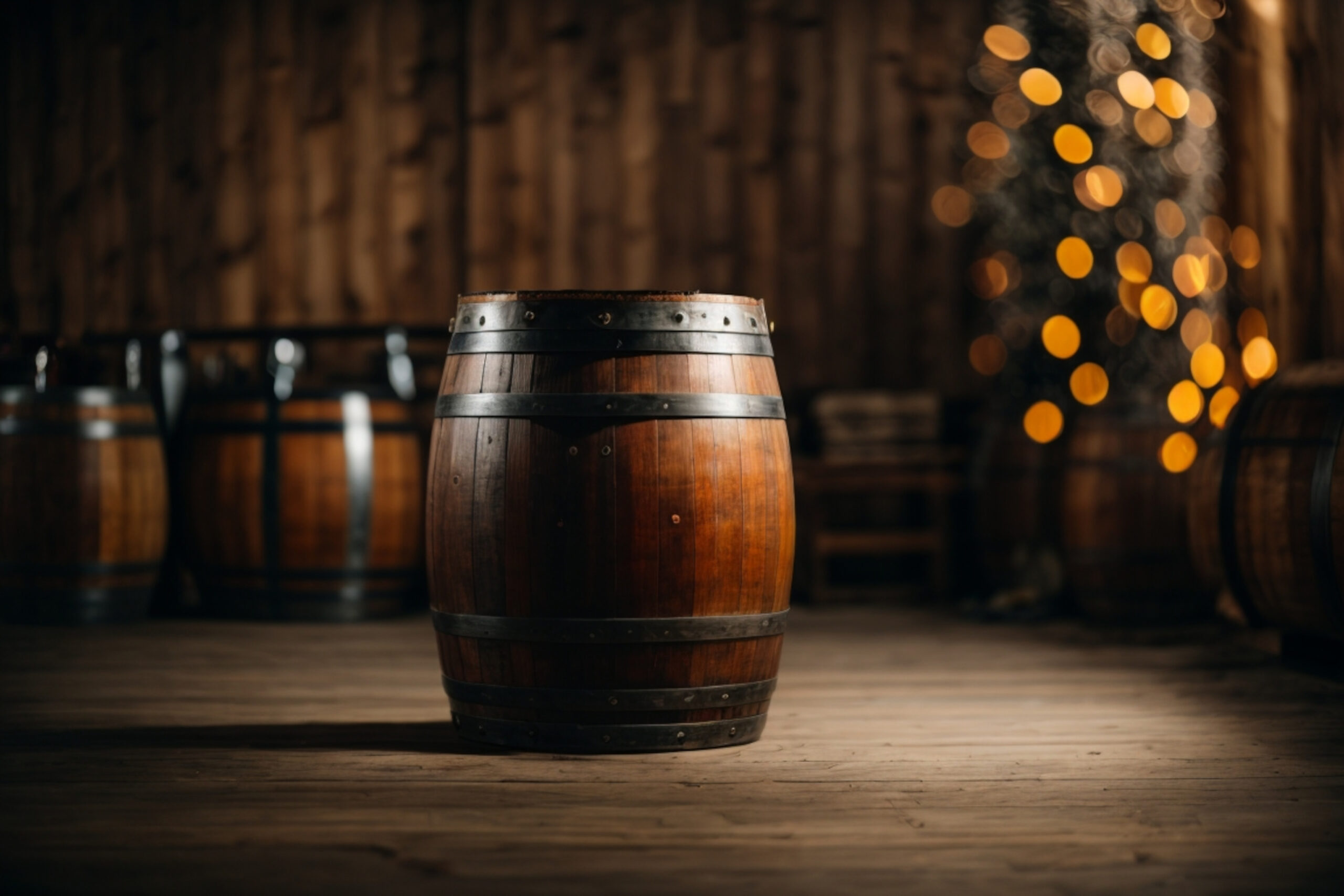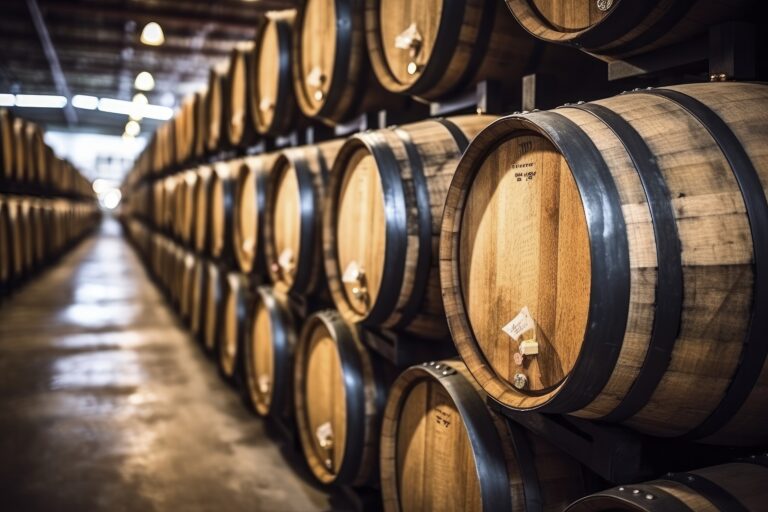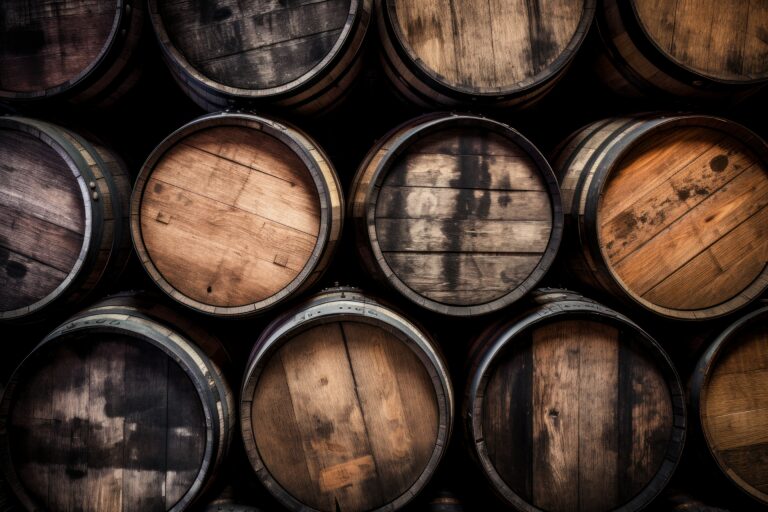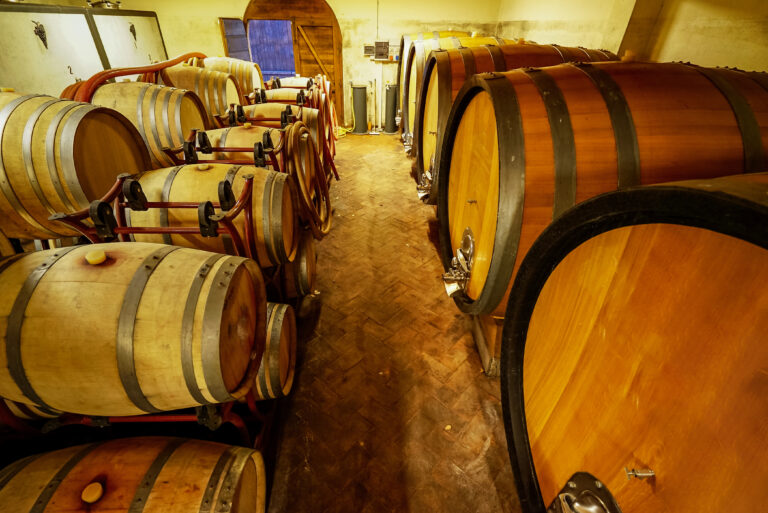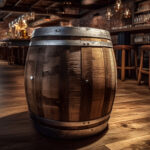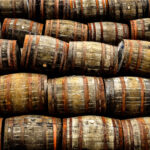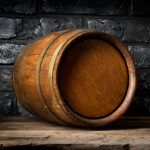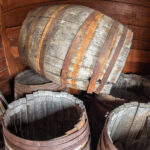You might not immediately think about it, but the subtle dance of the seasons profoundly shapes your favorite aged whiskey as it matures in oak barrels. As temperatures naturally rise and fall, the whiskey gently expands and contracts. This breathing-like interaction allows it to draw out and release a symphony of compounds from the wood with each seasonal shift. This very interplay is the secret behind the development of those rich, complex flavors and the inviting amber hues we so admire in a well-aged dram.
When spring breathes new warmth into the air, the whiskey nestled within the barrels awakens and expands, reaching deeper into the oak. The longer, sun-drenched days of summer then accelerate this aging process, exposing the spirit to more of the barrel’s surface. As autumn’s cool embrace arrives, the contraction of the whiskey causes some to seep back out of the wood – now enriched with the barrel’s signature oaky flavors and enticing aromas. Finally, the short, still days of winter bring a pause to the overall aging, allowing these newly acquired flavors to mingle and mellow during the long, quiet nights.
While each season contributes its unique touch, temperature stands out as the primary conductor of this transformation. The warmth encourages a more intense dialogue between the spirit and the wood, while the cold acts as a gentle restrainer, slowing the pace. So, the next time you savor a sip of aged whiskey, take a moment to consider the journey through the seasons it has undertaken to achieve its distinctive character. Each passing spring, summer, autumn, and winter has etched its influence onto the flavor of your dram.
Introduction to Whiskey Barrel Aging
The aging process for whiskey is a patient art, often spanning years before the spirit reaches its peak maturity, developing the characteristic aromas and nuanced flavors that define each unique expression. Barrel aging, in particular, is indispensable in bestowing upon whiskey its signature taste and complexity. However, the subtle yet powerful influence of the seasons plays a crucial role in how barrels interact with and transform the whiskey during its long maturation.
As spring unfolds, bringing with it warmer temperatures, the whiskey within the barrel responds by expanding. This expansion allows the spirit to delve deeper into the charred oak, diligently extracting a wider spectrum of flavors. The extended daylight hours and rising temperatures also act as catalysts, speeding up the intricate chemical reactions between the whiskey and the wood, thus accelerating the overall aging process.
The heat of summer brings about even greater expansion within the barrel, but also introduces the phenomenon known as the “angel’s share” – the evaporation of a portion of the barrel’s contents. This can account for up to 2% loss annually, effectively concentrating the remaining whiskey’s flavor and aroma compounds. However, excessive heat can be a double-edged sword, potentially leading to an overly bitter and astringent profile imparted by the oak.
When autumn’s gentle coolness descends, temperatures begin to recede, and the whiskey within the barrel starts to contract. This subtle movement acts like a pump, pushing the now concentrated and flavorful compounds back into the heart of the spirit. The cooler weather also serves to moderate the pace of chemical reactions, allowing the oak and whiskey flavors to meld and mellow in a harmonious way.
During the stillness of winter, as temperatures reach their nadir, the whiskey’s movement in and out of the wood essentially ceases. While the aging process slows considerably in the cold, this dormant period is vital for the full integration and maturation of flavors. The more assertive tannins present in the oak gradually soften, evolving into the complex, smooth notes that whiskey aficionados appreciate.
Therefore, the cyclical rhythm of the changing seasons exerts a profound influence on how barrels mature and mellow whiskey over the long years of its aging. Without this natural ebb and flow, whiskey would lack the intricate depth of flavor and the layered complexity that the weather itself imparts. The next time you raise a glass of whiskey, remember that you are, in essence, tasting the seasons.
Spring Effects – Temperature Changes Impact Aging Speed
Spring’s arrival, with its promise of warmer weather and fluctuating temperatures, has a direct impact on the rate at which whiskey matures within the barrel.
As the mercury climbs in spring, the whiskey within the charred oak barrel expands. This expansion facilitates a greater absorption of the oak’s flavors, such as vanilla, caramel, and spice, and it does so at an accelerated pace. The increasing heat causes the wood to swell, opening its pores and releasing a greater concentration of the oak’s aromatic compounds.
The temperature fluctuations characteristic of spring also serve to accelerate the chemical reactions occurring within the barrel. This heightened activity enables the whiskey’s complex flavors to develop more rapidly. The diurnal temperature variations create a natural “pumping” action – as the whiskey seeps into the wood during warmer periods and then contracts back as temperatures cool. This continuous movement effectively infuses the whiskey with rich oak flavors and contributes to its distinctive amber color.
The elevated temperatures of spring can lead to a faster rate of aging, and you might observe the development of more mature notes in a relatively short time. However, it’s crucial to be mindful that prolonged exposure to high temperatures, particularly during the summer months, can result in an over-oaked character. Master distillers meticulously monitor their barrels to determine the precise moment for bottling.
While the warmth of spring undoubtedly accelerates barrel aging, the process still demands patience. Even with favorable temperatures, it can take years for the whiskey to achieve its full maturity and complexity. However, when bottled at the optimal time, a whiskey that has aged through the spring months often develops into a smooth, rich spirit with a memorable depth of flavor. Truly savor the seasonal effects captured in every sip.
Summer Effects – Heat Speeds Up Aging Process
Summer, with its characteristic heat and humidity, exerts a significant influence on the barrel aging of whiskey. The elevated temperatures cause the whiskey to expand in volume, compelling it to penetrate deeper into the wood of the barrels. This increased contact means a greater surface area of the whiskey interacts with the barrel wood, leading to the extraction of more flavor compounds, such as vanillin, which imparts notes of vanilla, caramel, and toffee.
The summer heat also acts as a catalyst, accelerating the chemical reactions between the whiskey and the barrel. Consequently, flavors develop at a more rapid pace. Barrels that might require years to reach maturity in cooler seasons can achieve an ideal flavor profile in a matter of months during the summer. However, this accelerated aging can also be a risk, potentially resulting in a whiskey that tastes excessively oaky, dry, and tannic if left in the barrel for too long.
Distillers must exercise diligent oversight of their barrels during the summer months and may opt to relocate some to cooler environments indoors if the heat becomes extreme. The ideal conditions for hot-weather aging involve a warehouse that promotes airflow and some degree of temperature variation, while stagnant, overly hot conditions should be avoided.
As summer yields to the cooler temperatures of fall, the whiskey will contract once more towards the center of the barrel. This continuous interaction with the wood through expansion and contraction over multiple seasons culminates in a product with unparalleled depth and character. The summer’s boost to aging helps establish the foundational flavors, while the spring and fall contribute to refining and balancing these flavors into a harmonious, complex spirit.
In essence, the summer heat is an integral component of the barrel aging of whiskey and the creation of a quality product. However, it necessitates careful attention and a delicate balance to harness just the right amount of influence from the warm summer days. With proper care and patience, the summer’s warmth can work its transformative magic on the whiskey as it slumbers within its charred oak barrel.
Fall Effects – Cooler Temperatures Slow Down Aging
Fall marks a significant shift in the whiskey barrel aging process. As the temperatures begin their descent, the whiskey inside the barrels expands and penetrates further into the wood. This deeper interaction facilitates a greater extraction of the whiskey’s flavor compounds from the charred oak, leading to an intensification of flavor.
Cooler Weather Slows Down Chemical Reactions
The cooler temperatures characteristic of fall cause the chemical reactions responsible for producing flavor compounds to decelerate. This slower rate provides these compounds with more time to impart their essence to the whiskey. Furthermore, the gentler pace of reaction allows for the development of more subtle and intricate flavors.
Less Evaporation Means More Concentrated Flavor
During the cooler months, there is a reduction in the evaporation of whiskey through the barrel staves. This decreased “angel’s share” means that more whiskey remains within the barrel, becoming increasingly concentrated in flavor as it continues its interaction with the wood. The annual loss due to evaporation may decrease to a mere 1-3% during the fall and winter.
Expansion and Contraction
As temperatures gradually decline, the whiskey expands and is forced further into the wood. Conversely, when temperatures experience even slight increases, the whiskey contracts, drawing flavorful compounds back into the liquid. This continuous cycle of expansion and contraction facilitates a rich exchange between the whiskey and the wood, contributing significantly to the spirit’s depth and complexity.
The fall season acts as a moderating force in whiskey’s barrel aging, allowing for the emergence of richer, more nuanced flavors through a combination of slower chemical reactions, increased concentration due to less evaporation, and the dynamic exchange with the wood. By the time spring arrives, the whiskey has often absorbed spicy, caramel, and vanilla notes that hint at the warmth to come. This cyclical process continues, with the heat of summer once again accelerating the aging journey.
Winter Effects – Colder Temps Further Slow Maturation
The frigid embrace of winter brings the whiskey maturation process to a deliberate crawl. As temperatures plummet, the liquid within the barrels contracts and retreats slightly from the wood. While this still allows for interaction between the whiskey and the barrel char, the pace of chemical reactions significantly diminishes in the cold.
Lower Temps Mean Slower Maturation
The correlation is clear: the colder the temperature, the more protracted the maturation process. At lower temperatures, there are fewer active molecules within the whiskey available to interact with the barrel. This translates to a reduced rate of extraction of flavors and aromas from the wood.
While the whiskey remains in contact with the barrel for extended periods during winter, the actual degree of maturation that occurs is less pronounced. The diminished heat causes most of the chemical processes involved in maturation to nearly halt. This includes oxidation, extraction, and evaporation.
Less Angel’s Share in Winter
The “angel’s share,” the portion of liquid lost to evaporation during maturation, experiences a notable decrease during the winter months due to the cooler weather. This reduced evaporation means that the overall volume of whiskey is less impacted. However, it also implies a slower development of complex flavors that often arise through oxidation and concentration.
Patience Required
Both whiskey makers and enthusiasts must exercise patience during the winter months. While the cold weather may slow the visible progress of maturation, the return of warmer temperatures will reignite the aging process. The time spent within the barrel during winter still contributes to the overall character of the whiskey. The subtle, gradual changes that occur during this dormant period lay the groundwork for more rapid maturation once temperatures rise again in the spring.
Much like the cyclical nature of the seasons themselves, whiskey maturation is a rhythm of activity and rest. The winter slumber gives way to an awakening in the spring and summer, as the intricate dance between whiskey and wood resumes. With the return of warmer weather comes an acceleration of the maturation process and the continued transformation of the whiskey.
Regional Climate Differences Impact Aging Year-Round
The specific location and prevailing climate where whiskey barrels are aged exert a significant influence on the spirit’s development over time. Subtle variations in weather patterns across different regions lead to nuanced changes in how the whiskey interacts with the wood.
Temperature
Temperature plays a crucial role in dictating the speed of chemical reactions within the barrel. Warmer climates tend to accelerate the aging process, while cooler regions result in a more gradual maturation. This explains why whiskey aged in Kentucky, with its hot summers and cold winters, often matures more quickly than whiskey from Scotland, characterized by its milder weather.
Humidity
Humidity levels determine the extent to which whiskey evaporates from the barrel over time, a phenomenon known as the “angel’s share.” Higher humidity leads to less evaporation, while lower humidity results in a greater loss of volume. The interplay between humidity and temperature also affects the degree to which the wood’s flavor compounds are imparted to the whiskey.
Barometric Pressure
Fluctuations in barometric pressure cause the whiskey to move in and out of the wood as the barrel expands and contracts. When pressure drops, whiskey is forced deeper into the wood. As pressure rises again, the whiskey is drawn back out, carrying with it flavor compounds extracted from the wood. Regions experiencing greater variations in pressure tend to produce more complex whiskeys.
Sun Exposure
Direct exposure to sunlight can accelerate chemical reactions within the barrel, particularly on the side facing the sun. This can lead to uneven maturation, with the whiskey in sun-exposed areas aging more rapidly. Most distilleries mitigate this by aging barrels in warehouses. However, some believe that limited sun exposure can add a layer of complexity, and barrels may be rotated during aging to minimize uneven effects.
The regional climate and prevailing weather patterns where a whiskey barrel ages contribute to its final character in subtle yet complex ways. A blend of experience and a grasp of chemistry is required to fully appreciate how the seasons influence this alchemical process. Ultimately, the results can be tasted in each nuanced dram of barrel-aged whiskey.
How Distillers Adapt Barrel Location Based on Seasons
Distillers possess a deep understanding of how the changing seasons profoundly impact the whiskey barrel aging process. As temperatures naturally fluctuate throughout the year, the wooden barrels respond by expanding and contracting, facilitating the whiskey’s interaction with the wood as it seeps in and out. This very interplay is what bestows upon aged whiskey its distinctive flavor profile and rich color.
Summer Heat
During the sweltering summer months, the elevated temperatures cause the wood barrels to expand, allowing the whiskey to penetrate deeper into the wood. In this intimate contact, the whiskey diligently absorbs more of the wood’s flavorful compounds, such as those imparting notes of vanilla and caramel. The heat also acts as a catalyst, accelerating chemical reactions that break down acids and tannins within the wood, ultimately contributing to a smoother taste. However, excessive heat can be detrimental, causing the whiskey to age too rapidly and develop a sharp, bitter edge.
To mitigate the risk of over-aging during the summer, some distillers strategically relocate barrels to cooler barrel houses or implement measures to increase humidity. The lower temperatures and higher humidity serve to slow down the aging process and help the barrels retain a greater volume of whiskey.
Winter Chill
As winter’s chill descends and temperatures plummet, the wood barrels respond by contracting, gently pushing some of the whiskey back out of the wood and into the barrel. While the colder weather may result in less intense flavor extraction, desirable compounds continue to interact with the whiskey. The slower pace of aging during winter acts as a counterpoint to the accelerated aging of summer, contributing to a smoother and more consistent final product.
Some distillers capitalize on the cooler winter temperatures by moving barrels to unheated barrel houses. The colder climate encourages even greater contraction of the wood, leading to a reduction in the amount of whiskey lost to evaporation, often referred to as the “angel’s share.” Retaining a higher volume of whiskey after aging ultimately translates to a greater yield for the distiller.
By strategically adapting barrel storage locations in response to the changing seasons, distillers gain a greater degree of control over the intricate aging process. They can subtly influence the speed of aging to achieve the perfect harmony of flavor, color, and aroma in their prized aged whiskeys. The seasonal variations, far from being a hindrance, contribute to the rich tapestry of flavors that define a truly exceptional spirit.
Experimenting With Shorter or Longer Aging Times
While tradition often dictates that whiskey barrels are aged for years to reach their flavor apex, have you ever considered the intriguing possibilities of experimenting with shorter or longer aging times? As the seasons gracefully transition, the temperature and humidity within the barrels undergo their own fluctuations, subtly imbuing the whiskey with distinct qualities.
During the vibrant seasons of spring and summer, the elevated temperatures act as catalysts, accelerating the chemical reactions within the barrel. This heightened activity encourages the whiskey to extract a greater concentration of flavors from the wood. The increased humidity during these warmer months also causes the barrel staves to swell, allowing the whiskey to penetrate the wood more deeply. The result is often a whiskey characterized by robust, woody notes.
As autumn’s gentle coolness descends and humidity levels decrease, the barrel begins to contract as it gradually dries out. This contraction reverses the flow of whiskey into and out of the wood. The cooler temperatures also serve to moderate the pace of chemical reactions, helping to preserve the delicate fruity esters that developed during the warmer months. Whiskey aged primarily over the fall and winter tends to exhibit more delicate and fruity aromas.
In certain climates, extending the aging process over several winters can yield a whiskey with intriguing creamy and spicy notes, derived from the charred interior of the barrel. The repeated expansion and contraction of the barrel in response to the temperature shifts across multiple seasons creates an ideal environment for the development of these complex flavors.
Therefore, consider the possibilities of experimenting with different aging periods based on your local climate and the specific flavor profile you wish to achieve. If bold, woody flavors are your aim, aging the whiskey primarily during the spring and summer months might be your best approach. For more delicate, floral notes, aging over the fall and winter could prove more rewarding. And for the most intricate, layered whiskeys, a longer aging period that spans all four seasons is often ideal. While tradition often calls for aging times measured in many years, with the right conditions, you might be surprised at the exceptional whiskey you can craft in a shorter timeframe. Why not begin with an aging period of six months to a year, tasting as you go? You might just discover your perfect whiskey aging season.
FAQs on Seasonal Effects on Whiskey Barrel Aging Processes
The aging of whiskey is significantly influenced by the cyclical changes of the seasons throughout the year. As spring, summer, autumn, and winter each take their turn, the temperature and humidity levels within the barrel undergo corresponding fluctuations. These variations, in turn, have a direct impact on the speed at which the whiskey matures and develops its distinctive flavor profile.
Temperature
As the warmth of summer arrives and temperatures climb, the whiskey inside the barrel expands. This expansion causes the whiskey to penetrate further into the wood, facilitating a greater extraction of flavors from the charred oak. The elevated summer temperatures also accelerate the chemical reactions that occur during aging, leading to a more rapid development of flavor compounds.
Humidity
Higher humidity levels, typically observed during the spring and summer months, cause the barrel to swell as it absorbs more moisture from the surrounding air. This swelling of the wood tightens the barrel staves, effectively limiting the whiskey’s exposure to oxygen. Consequently, the processes of oxidation and overall maturation are slowed down. Conversely, the lower humidity characteristic of fall and winter causes the barrel to shrink, increasing the whiskey’s contact with oxygen. This additional oxygen exposure during the cooler months can accelerate aging and bring about further flavor changes.
Air Pressure
Barometric pressure also plays a subtle role in how whiskey ages throughout the year. Higher air pressure, often associated with colder weather systems, tends to push the whiskey deeper into the barrel wood. Conversely, lower air pressure, more common during warmer periods, can draw the whiskey back out of the wood. These subtle pressure variations contribute to the nuanced development of flavor over the course of a year.
While some distilleries employ year-round temperature-controlled warehouses to ensure consistency in the aging process, many experts contend that the natural variations of the seasons ultimately yield a superior flavor complexity. The dynamic interplay of temperature, humidity, and pressure leads to a more intricate interaction between the whiskey and the barrel, creating distinctive flavor notes that can vary from year to year.
In conclusion, the changing seasons exert a profound influence on how barrels age whiskey. By understanding these seasonal impacts, one can gain a deeper appreciation for the intricate process through which fine whiskeys develop their signature taste over time – a harmonious partnership between spirit, wood, and the ever-present environment.
Final Thoughts
So there you have it – a concise overview of how the ever-changing seasons leave their indelible mark on the aging of whiskey as it patiently slumbers within charred oak barrels. The subtle dance of temperature fluctuations, the ebb and flow of humidity levels, and the gentle influence of airflow all contribute to the evolving tapestry of flavor and aroma compounds within the barrels. While the summer’s warmth acts as an accelerant, winter’s chill serves as a natural decelerator. The cyclical rhythm of the seasons is an undeniable force, even in the realm of whiskey.
The next time you pour yourself a dram of well-aged whiskey, take a moment to contemplate the journey through the seasons that has shaped it. Much like the turning of the year itself, aged whiskey stands as a testament to nature’s fleeting beauty and the inexorable passage of time. Savor the notes of wood, the hints of spice, the whispers of fruit, and recognize that without this seasonal ballet, your whiskey simply wouldn’t possess the same captivating character. The seasons give, and the seasons take away. But in the end, they leave behind a whiskey transformed.
